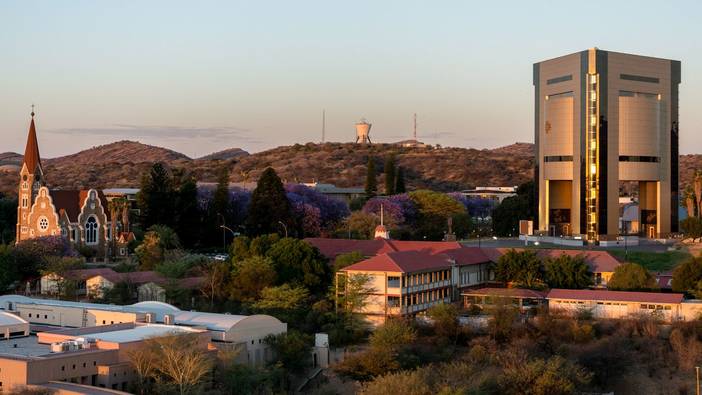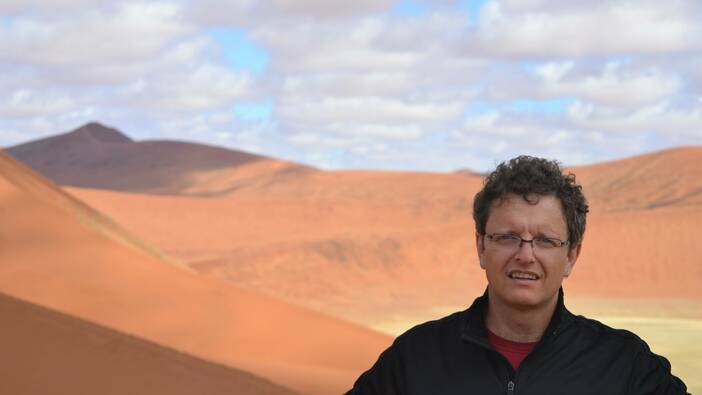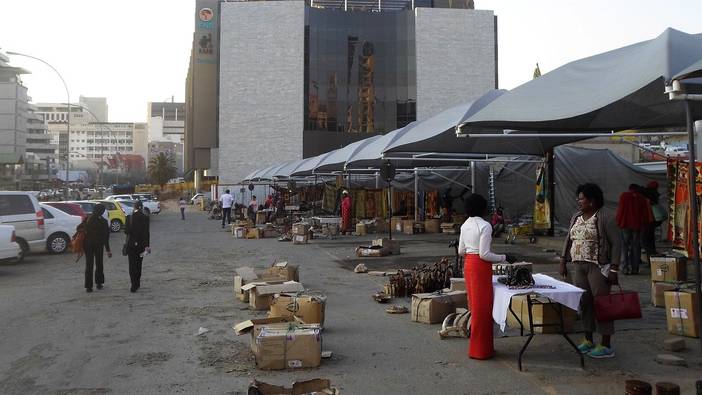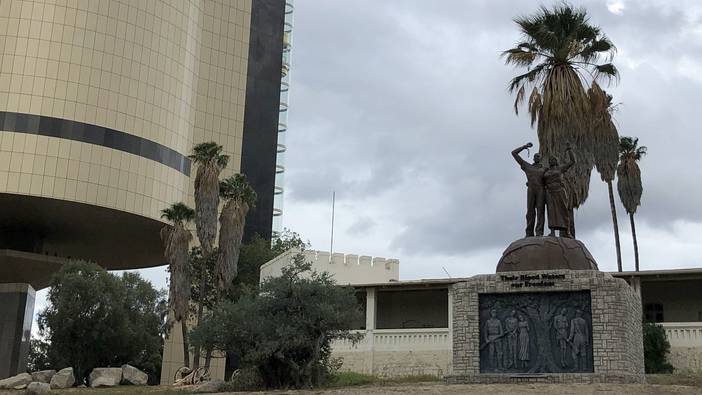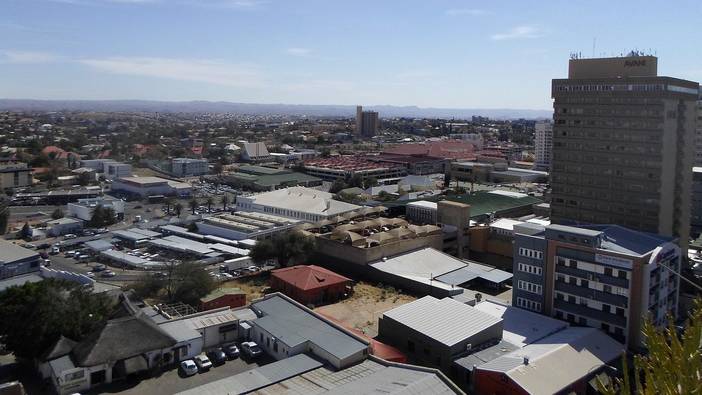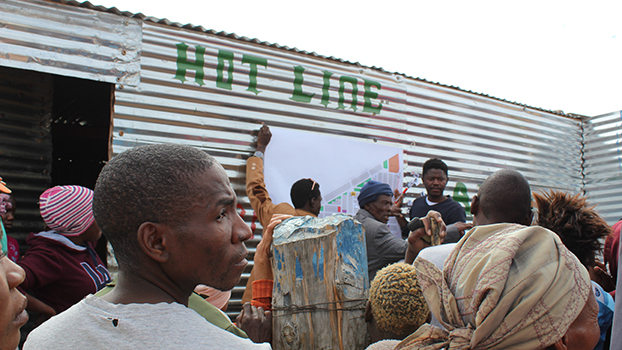
After 30 years of independence, the “land question” is at a critical point in Namibia. Regarding rural land reform, a compromised “willing buyer, willing seller” approach and resettlement-based processes have yielded little success. Not only have they been expensive, inefficient, and often benefitting elites, but today some of those lower-income households that were selected for resettlement wish they had not “benefitted” given the precarious situation in which they find themselves. Moreover, some critical aspects of land and social justice which had previously not found much attention are now on the plate.
Guillermo Delgado is the “Land, Livelihoods and Housing” Programme Coordinator at the Integrated Land Management Institute at the Namibia University of Science and Technology.
Uhuru Dempers is a veteran activist, member of the Evangelical Lutheran Church in Namibia, and coordinator of the Civil Society Organisations Working Group on Land Reform.
Urban land aspects have been largely neglected until recently, when Namibia woke up to the fact that nearly half of its population lives in shacks. This is an astounding fact, considering that 30 years ago there were virtually no informal settlements in the country. At that time, only about 20 percent of the population lived in an urban area, although this was quickly changing since the removal of influx controls around the 1980s. Then there is the question of ancestral land lost to colonial settlement, which was discussed but not resolved and has now re-emerged, exposing unhealed wounds, precarious race relations, but also solidarity and unity among affected groups.
While there are several important aspects worth mentioning regarding Namibia’s land question, we want to highlight these three to think about what has changed in this field since independence. Changes have largely come about through bottom-up struggles and an ongoing dialogue between organized civil society movements and the state throughout this period.
What, then, used to be the land question? Namibia’s independence held many promises. Central to these were issues of redistribution and social justice in terms of what was then understood as the land question. Today, Namibia is at another crossroads—one that comes after state-led approaches with a narrow focus on “the rural” in land reform have prevailed with limited success. Over the years, civil society organizations (CSOs) and grassroots movements have proven to be instrumental in these debates, gaining legitimacy through self-organizing and building partnerships with central and local government as well as other stakeholders. Today, the focus on the land question has broadened: urban land matters have claimed their place at the centre of national debates, and the long-avoided questions around ancestral land have re-emerged. New approaches have begun to flourish and shown results, the key question now is whether new pathways will be followed. Politically, this is a crucial decision: this time around, the struggle is not directed against colonial forces, but is primarily about forces internal to Namibian society and politics. Those need to negotiate and decide whether there will indeed be new approaches to the land question.
This contribution to the Namibia@30 dossier traces the dialogue between civil society and the state from the time of the First National Land Conference (NLC) in 1991 to the second one (2NLC) in 2018, and discusses the significance of bottom-up initiatives that happened in between the two state-run endeavours. The focus is not on the individual activism of specific organizations or individuals, but what can be achieved when movements coalesce and act collectively on the land question and engage the state. We outline some of the lessons learned, and point to new approaches and proposals that have emerged so far. We then argue that these crucial times are testing whether new pathways will indeed be followed.
The Civil Society Organisations Working Group on Land Reform (CSO-WGLR) currently consists of the Namibia National Farmers Union (NNFU), the Council of Churches in Namibia (CCN), the National Union of Namibian Workers (NUNW), the National Youth Council (NYC), the Namibia Housing Action Group (NHAG), the Shack Dwellers Federation of Namibia (SDFN), //Naosan /Aes (Movement of Landless People), the Trade Union Congress of Namibia (TUCNA), the Namibia Rural Women’s Assembly (NRWA), the Namibia Development Trust (NDT), the Legal Assistance Centre (LAC), and the Desk for Social Development of the ELCRN (DfSD-ELCRN), which currently serves on behalf of NANGOF as the Secretariat, convening the CSO-WGLR and coordinating and implementing project activities and programs. From the twelve organizations, eight are active on a daily basis whereas others occasionally participate in activities. Some individuals from universities and research institutions as well as individual activist participate in the work of the CSO-WGLR.
From One Land Conference to the Next: Trajectories of Advances and Setbacks
The centuries-long process of land dispossession through colonialism and private profit-driven interests is well-documented. What is less documented is the resistance to these processes, as well as the involvement of civil society and grassroots’ groups in the land question both before and after 1990. Independence brought a promise to redress land dispossession, and struggles around this generated momentum within civil society during the first decade of Namibian independence. However, when the first National Land Conference was convened in 1991 to define the way in which the new democratic government would deal with the “land question”, there was not enough coordination among the grassroots to leverage bottom-up perspectives. Civil society as a whole had little impact on the conference resolutions. In line with the overall transition to independence, the result was a compromise not sufficiently favouring those dispossessed over generations. Civil society and the still-enthusiastic population—many with high hopes about the liberation struggle movement taking over the government—were made to believe that change would follow soon. Reality told a different story: private property was protected and a “willing buyer, willing seller” approach to land reform was endorsed. Generally, land reform was to be executed primarily by government and rely on the good will of those whose ancestors had benefitted from colonial dispossession.
Worth noting is that back in 1991 urban land issues were largely absent from the discussion, despite the fact that urban influx control had been lifted before 1990 and many people began moving to urban areas in the 1980s. Informal settlements had started to emerge, and bottom-up groups began to organize around access to urban land. These were the predecessors of the Shack Dwellers Federation of Namibia (SDFN) and their support NGO, the Namibia Housing Action Group (NHAG), which lead the way in bottom up-led partnership approaches to urban development today.
Three years after the first land conference, a Civil Society Organisations Working Group on Land Reform (CSO-WGLR) was formed to put pressure on the government to implement and include more progressive conference resolutions. In 1994, in light of the 1991 conference’s shortcomings and the lack of implementation, the CSO-WGLR organised a “People’s Land Conference” to consolidate a bottom-up position on land matters. During this event urban land was a main topic for discussion, and some of today’s SDFN and NHAG activists attended the event. The conference concluded that there was a lack of action on the side of government, that pertinent issues were omitted from the resolutions, and agreed on a new land reform agenda.
At this point, despite apparent dialogue and gains, the failures of land reform kept mounting. While it appeared that the “willing buyer, willing seller” model would be balanced with an option for the state to expropriate land in the public interest, the government continued to buy land at commercial prices. Prohibition of land sales to foreigners was another demand from the People’s Land Conference, however the government left a backdoor open through which the Minister remained able to permit such sales. Removal of Illegal fencing was another aspect that was agreed but not implemented. Resettlement continued to benefit the politically well-connected.
This spurred the CSO-WGLR to convene another non-government Conference on Land Reform in 2011. One of the outcomes was a request for the government to organize a second National Land Conference. After several years of back and forth, the government announced in 2016 that this was going to take place in 2018. Pressure from the civil society alliance and academics secured the representation of CSOs in the organization of the conference and in the final list of delegates. Also through pressure from civil society and traditional authorities, issues of urban and ancestral land became part of the five key thematic areas. A process of consultation prior to the conference prepared the ground for the demands to be put forth at the second National Land Conference.
The mobilization before and during the conference had concrete outcomes on its final resolutions. The CSO-WGLR was resolute that the priority ought to be the improvement of living conditions in informal settlements. Again, through negotiations, CSO-WGLR was instrumental in ensuring that the closing speech by the president included the declaration of living conditions in informal settlements as a “humanitarian crisis”. A promise was made that the government would declare this a national emergency and act accordingly, but thus far budgetary allocations do not reflect these commitments.
Civil society organizations and traditional authorities also successfully lobbied for a commission on ancestral land to be established to further work on this matter despite objections from the two former Namibian Presidents and some ruling party structures.
Locating the Second Crossroads in the “Land Question”
Today, the key realization from the civil society activists’ point of view is no longer that government has been unable to meet its land reform targets and that the goal is only to hold it accountable. Instead, what is increasingly questioned is the approach to the land question. Activists are clear that the central government’s view of itself as the sole implementer and custodian of land reform is obsolete. This is not only in light of the lack of tangible implementation during the three decades since 1990, but because multi-stakeholder partnerships—particularly regarding informal settlement upgrading—are beginning to yield remarkable results. An example of this is the National Alliance for Informal Settlement Upgrading, a partnership to scale up security of tenure and housing opportunities through co-production between organized communities, local and regional authorities, the central government, and universities, with the aim of taking efforts nation-wide. While at independence it was thought that poor communities were unable to undertake improvements to their living conditions in urban areas and professional state-led (“formal”) interventions were favoured, the tables seem to have turned. Today it is increasingly clear that it is precisely the “formal sector” that is unable to deliver meaningful improvements for the urban majority. This has led to direct government contributions and increased local government support for poor urban communities in the form of land allocations and services, along with the right to remain in cases where the poor would otherwise have been displaced in the name of “development”.
The compromises made to secure elite interests for the sake of “stability” have become untenable. A key example is how the government has interpreted “just and fair compensation” for land in the land reform process as market value—a mistake that advocate Tembeka Ngcukaitobi highlighted during his intervention at the second land conference in October 2018. Despite the fact that expropriation has been on the civil society agenda since independence, there been no coordinated and strategic approach, only some isolated and unsuccessful government attempts to expropriate commercial farmland. The Second National Land Conference reopened this conversation and extended it to urban land by including a provision to expropriate unused and underutilised land in urban areas. The CSO-WGLR strongly supports the provision, and is currently engaged in defining ways to go about this approach to urban land issues.
The “Real Politics” of Deciding on the Land Question in 2020
In 2020 we are indeed at a second crossroads in terms of social justice and land. There is the relatively “new” arena of struggle centred around the more dense and diverse urban areas. There are concrete demands with regard to improvement of living conditions in the vast informal settlements across the country, resistance to forced evictions, and calls for recognition of the informal sector, which provides a livelihood for most of those who are considered “employed”. There is the struggle around the restitution of ancestral land that cuts across geographies. These new arenas have joined with the collective memory and awareness of the record of implementation vis-à-vis the promises of independence in a context of extreme and persistent inequality. At stake is whether the government will embrace new partnerships with civil society and grassroots’ struggles that remain willing to engage in a spirit of dialogue and cooperation based on a broader understanding of the land question. Government has so far signalled some change, but much more needs to be done to avoid dampening the spirit that so far has been sustained with hopes for social justice, and a reserve of enthusiasm still being fed by memories and the promises of independence in 1990.
If the current situation is the result of this dialogue between organized civil society movements and the state, it can be said that the need to re-think approaches exists very much on both sides. This article documents what can happen when various movements, themselves led by prominent activists and powered by numerous constituencies, try to speak with one voice when engaging the state. Much more can be said about what the dozens of organizations and individuals have done before and after independence regarding the land question, but this task certainly goes beyond this short piece. What can be said with certainty is that the desire for social justice regarding the land question and land struggles remains intact, and that younger generations have demonstrated an awareness that their current disadvantage is structural and the result of long historical processes of unresolved injustices.
The approach to the land question is now in question and at the forefront of demands. Crucial to this is whether the role of the state will indeed be repositioned as only one among various stakeholders in an inclusive process of redressing land injustice. The concept of “land reform” needs to be decolonized simply because—referring to Audre Lorde’s famous statement—it is not possible to dismantle the master’s house with the master’s tools. If so, the first attempts at land reform formulated around independence can be regarded as merely “preliminary”. Independence then becomes just a prerequisite for the “real politics” that might start now, when Namibia’s society has come to be dealing with itself, the decisions it has taken, and the lessons it has learned. The “real politics” of resolving internal contradictions with regard to class, race, ethnicity, gender, and sexual orientation are currently at stake. Although these are linked to historical processes, it is mainly current actors that will be held accountable and challenged for this. This imbues the land question with both increased complexity as well as potential. Namibia’s civil society may be indeed heterogeneous and operate in a seemingly intermittent way, but in terms of the land question it has earned and it is demanding its place as a leading force in addressing this unfinished matter in new ways.
NUST has opened an online archive with all the submissions to the 1991 Land Conference, including the report of the People’s Land Conference. The Second National Land Conference resolutions, list of attendants, and other documents are available on the Ministry of Land Reform’s website, all of which is also included in a website opened by NUST including all the submissions to the Conference that did not make it to the official repository. The civil society-led process leading to the conference was partly documented here.
